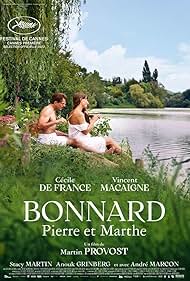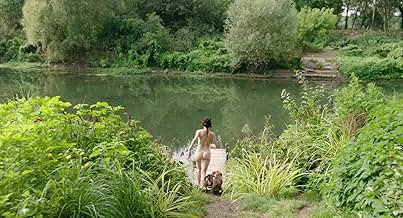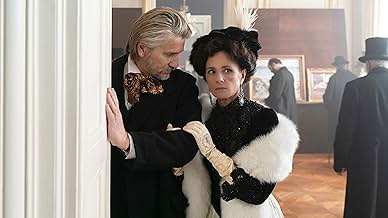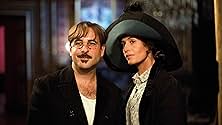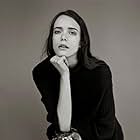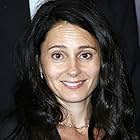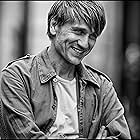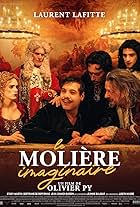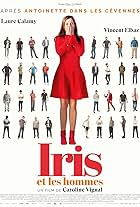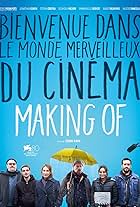IMDb RATING
6.5/10
557
YOUR RATING
The life of French painter Pierre Bonnard and his wife, Marthe de Méligny, over five decades.The life of French painter Pierre Bonnard and his wife, Marthe de Méligny, over five decades.The life of French painter Pierre Bonnard and his wife, Marthe de Méligny, over five decades.
- Director
- Writers
- All cast & crew
- Production, box office & more at IMDbPro
Storyline
Did you know
- TriviaSelected for the Cannes Première section at the 2023 Cannes Film Festival.
Featured review
'Bonnard: Pierre & Marthe' (2023) is a film I would have had many reasons to like. It is the biopic of an artist from a revolutionary period of fine arts. It's a love story that takes place over half a century. It's a well-written and beautifully shot film, made by a film director who has already proven that he knows how to make excellent films about artists. And yet, something is missing. In 2008, Martin Provost directed and wrote 'Séraphine', a film about a very special artist with a spectacular biography. He then managed to enter her soul and bring to the screen a damned destiny of a female artist who suffered a lot in life. Unlike Séraphine Louis, Pierre Bonnard, considered the 'painter of happiness', had a relatively easy life, the support of his protectors launched his career and his commercial success ensured a life without material problems. Even the love story depicted in the film, with its ups, downs and dramas, is, at least seen from afar, a happy one, almost unique in the world of artists. Like it or not, traumatized lives and unhappy love stories are better filmed than long lives and long-surviving relationships.
The scene that opens the film takes place in 1893 in the Parisian studio of the young painter Pierre Bonnard. The artist had just met Marthe, noticing her on the street and inviting her to pose for him. What the French call a 'coup de foudre' takes place. In a few hours the two end up in bed and a few days later Pierre proposes to the young woman to spend their lives together. Marthe comes from a modest background, she is a worker in an artificial flower factory, she is intelligent and does not seem to lack education, but she is intimidated by the social environment and by Pierre's friends, a mixture of artists and rich people (including women) who support them. She knows that if she says yes and is lucky, she'll devote her life to supporting an artist with his eccentricities who is also a man with the specific manly egoism. If she says yes and is not lucky, the risk is that she will be very unhappy. She says Yes. The two move outside the city to a house on the banks of the Seine, a boat trip from the Givenchy of Claude Monet, who is Bonnard's friend and mentor, in a natural setting with the waters and lights that cradled Impressionism . The relationship is not without its ups and downs. Bonnard gives Marthe enough reasons to be jealous. At least two other women play an important role in his life: the pianist Misia Sert who became a patron of the arts and artists using the wealth of her successive husbands and the young artist Renée Monchaty, a late love that puts their relationship in danger. Only after this last affair fails, the two will marry, after more than 30 years of cohabitation. The First World War had marked the middle of their lives and their love story, the Second World War the end.
'Bonnard: Pierre & Marthe' lasts two hours. Martin Provost tells the story in detail, includes a lot of anecdotes gathered from the artists' memoirs or from the press of the time. It is not about the painter's biopic but about telling a love story. If there is no love, there is no art. The emphasis doesn't always seem to be on the most significant details. Some of the scenes that take place in the house on the banks of the Seine seem repetitive, while the dramatic episode of the relationship with Renée and her suicide in parallel with Martha's transformation into an artist seems superficially addressed. The most successful scenes seemed to me to be the ones where we see Bonnard (played by the excellent Vincent Macaigne) painting. In collaboration with the director of cinematography Guillaume Schiffman, film director Martin Provost manages here something that I also liked in 'Séraphine' - he harmonizes the color palette of the artist with the description of the environment that surrounded him, indicating the influence and creating an aesthetic vibration between the two visual universes. Psychologically, however, the characters cannot be deciphered until the end, despite all the efforts of Vincent Macaigne and Cécile de France in the role of the woman who dedicates her life to the artist.
I confess that I am not a big fan of Pierre Bonnard's paintings. I admire his technique, I respect his courage, I recognize his contribution to the history of art, but I cannot immerse myself in his art. My relationship with his paintings is one of aesthetic appreciation and not emotional vibration. I had about the same feeling when watching this movie.
The scene that opens the film takes place in 1893 in the Parisian studio of the young painter Pierre Bonnard. The artist had just met Marthe, noticing her on the street and inviting her to pose for him. What the French call a 'coup de foudre' takes place. In a few hours the two end up in bed and a few days later Pierre proposes to the young woman to spend their lives together. Marthe comes from a modest background, she is a worker in an artificial flower factory, she is intelligent and does not seem to lack education, but she is intimidated by the social environment and by Pierre's friends, a mixture of artists and rich people (including women) who support them. She knows that if she says yes and is lucky, she'll devote her life to supporting an artist with his eccentricities who is also a man with the specific manly egoism. If she says yes and is not lucky, the risk is that she will be very unhappy. She says Yes. The two move outside the city to a house on the banks of the Seine, a boat trip from the Givenchy of Claude Monet, who is Bonnard's friend and mentor, in a natural setting with the waters and lights that cradled Impressionism . The relationship is not without its ups and downs. Bonnard gives Marthe enough reasons to be jealous. At least two other women play an important role in his life: the pianist Misia Sert who became a patron of the arts and artists using the wealth of her successive husbands and the young artist Renée Monchaty, a late love that puts their relationship in danger. Only after this last affair fails, the two will marry, after more than 30 years of cohabitation. The First World War had marked the middle of their lives and their love story, the Second World War the end.
'Bonnard: Pierre & Marthe' lasts two hours. Martin Provost tells the story in detail, includes a lot of anecdotes gathered from the artists' memoirs or from the press of the time. It is not about the painter's biopic but about telling a love story. If there is no love, there is no art. The emphasis doesn't always seem to be on the most significant details. Some of the scenes that take place in the house on the banks of the Seine seem repetitive, while the dramatic episode of the relationship with Renée and her suicide in parallel with Martha's transformation into an artist seems superficially addressed. The most successful scenes seemed to me to be the ones where we see Bonnard (played by the excellent Vincent Macaigne) painting. In collaboration with the director of cinematography Guillaume Schiffman, film director Martin Provost manages here something that I also liked in 'Séraphine' - he harmonizes the color palette of the artist with the description of the environment that surrounded him, indicating the influence and creating an aesthetic vibration between the two visual universes. Psychologically, however, the characters cannot be deciphered until the end, despite all the efforts of Vincent Macaigne and Cécile de France in the role of the woman who dedicates her life to the artist.
I confess that I am not a big fan of Pierre Bonnard's paintings. I admire his technique, I respect his courage, I recognize his contribution to the history of art, but I cannot immerse myself in his art. My relationship with his paintings is one of aesthetic appreciation and not emotional vibration. I had about the same feeling when watching this movie.
- How long is Bonnard: Pierre & Marthe?Powered by Alexa
Details
- Release date
- Countries of origin
- Official site
- Language
- Also known as
- Bonnard, Pierre och Marthe
- Filming locations
- Production companies
- See more company credits at IMDbPro
Box office
- Budget
- €7,950,000 (estimated)
- Gross worldwide
- $2,651,635
- Runtime2 hours 2 minutes
- Color
- Aspect ratio
- 1.85 : 1
Contribute to this page
Suggest an edit or add missing content

